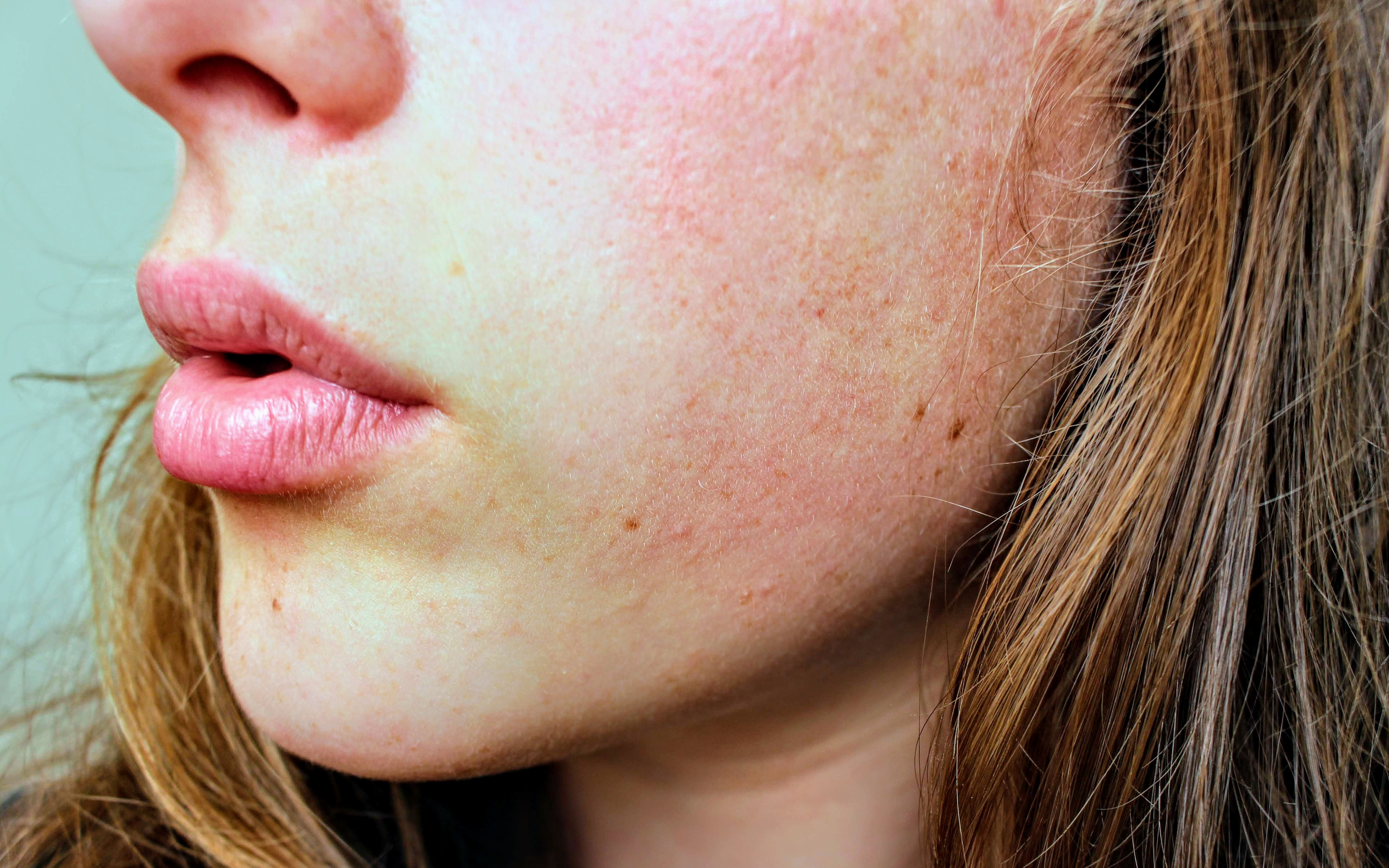SKINCARE
Rosacea: More Than Just Skin Redness
Rosacea: More Than Just Skin Redness
By Dr. Crystal Lee
It may happen and be an embarrassing moment for you and perhaps even the cold can leave your face red but there is a difference between the occasional blush and permanent flushing. There are many reasons why your face is red. If your nose and cheeks are chronically red, you may have rosacea.
What is Rosacea? | Everything you need to know to tackle redness head on | Skincare Recommendations [Cleanser and Exfoliants · Serums and Moisturisers · Daily Sunscreen]

What is Rosacea?
Rosacea is common but poorly understood skin condition. In fact, over 415 million people worldwide are affected with rosacea and may not even be aware of this. It often presents as sensitive, red, or inflamed skin with telangiectasia (visible tiny blood vessels) and pustules which are often mistaken as adult acne.
Rosacea is a common, chronic, inflammatory skin
condition that is more common in those with fair skin and blue eyes. Just like
many other conditions, the exact cause of rosacea remains a mystery. There are
indeed several theories regarding the cause of rosacea – genetic,
environmental, and inflammatory factors. Rosacea is often associated with
sensitivity to mites, the skin’s immune response to bacteria and its natural
enzymes (i.e. collagenase and elastase).
Everything you need to know to tackle redness
head on
The good news is that despite not knowing the root of the issue, we do know the triggers that can exacerbate the flushing. Some common triggers include spicy food, alcohol, stress, extreme temperatures, and sun exposure. Aside from avoiding these triggers, there are plenty of OTC skincare that can help soothe and calm skin redness.
People with rosacea tend to have sensitive skin. Remember to avoid irritating ingredients and to keep your skincare simple, ideally with some skin-calming ingredients to help reduce the redness and to optimize the skin barrier.
Skincare Recommendations
You will be surprised at how much a combination of a good lifestyle and a solid skincare routine can do to help with your rosacea. A simple skincare routine includes steps to help achieve these three main goals: clean, treat, and protect.
•Cleansers and Exfoliants
When it comes to cleansing your face, opt for gentle hydrating cleansers that do not leave your skin feeling tight or “squeaky” clean. They may be in the form of cream, balm, or even gel cleansers. I would also stay away from makeup wipes as they may be stripping and may cause unnecessary irritation. Aside from that, stay away from aggressive physical scrubs and astringent cells as they can aggravate skin redness! Swap them for gentle chemical exfoliants that may be incorporated into your cleansers, moisturisers, serums, or even leave-on products.
•Serums & Moisturisers
Look out for soothing calming ingredients such as oat, Centella, panthenol, and niacinamide when choosing your skincare products. Azelaic acid is a star ingredient when it comes to tackling rosacea. It is a superstar ingredient with antibacterial, anti-inflammatory, and skin cell regulating properties.
Even if you have oily skin, moisturising is
essential and helps restore the skin barrier. If you have oily or acne-prone
skin, look for moisturisers that are lightweight and have a gel-like texture.
For those with dry skin, opt for a thicker cream moisturiser that is packed
with skin-boosting ingredients such as glycerine and ceramides. To prevent
looking like a greaseball during the day, opt for a lighter moisturiser for
your morning routine while sticking to a thicker moisturiser at night.
•Daily Sunscreen
Daily sunscreen is non-negotiable for everyone to prevent photodamage that can ultimately cause signs of ageing such as sunspots, wrinkles, and loss of skin elasticity. For those with rosacea, sun protection will always be your best friend no matter the season! Not only can sun exposure trigger a flushing flare, but it can exacerbate the redness.
Both physical and chemical sunscreen are great
options as long as they are broad-spectrum (provide protection against both
UVA and UVB) with SPF30 and above. Physical sunscreen may be less irritating
for those with sensitive skin but may be less cosmetically elegant and may
leave a tint of a white cast!
If all things fail…
Don’t forget to visit your dermatologist who can offer a myriad of treatment options. Oral and topical antibiotics are effective in tackling rosacea. Other treatment options include isotretinoin (retinoids), lasers (intense pulsed light, pulsed dye laser).
- Prev
 SKINCARE | [Best Reviewer] Mary&May Young and Beautiful Set by @skinwithbes
SKINCARE | [Best Reviewer] Mary&May Young and Beautiful Set by @skinwithbes - Next
 SKINCARE | Which Sunscreen You Can Actually Trust?
SKINCARE | Which Sunscreen You Can Actually Trust?
No Comments.
